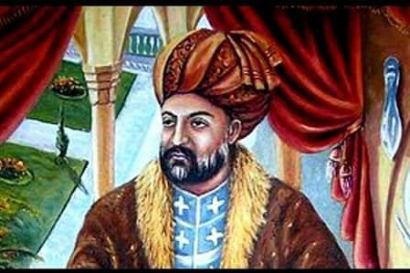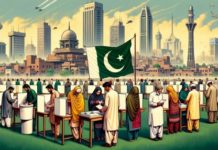Translator: Rabia Aslam
Source: Dr. Mubarak Ali, “Gumshuda Tareekh”, pp. 101 – 107, Fiction House, Lahore (2005).
Because of poor sense of history in Pakistan, we are yet to differentiate between invaders and heroes. When the process of history is viewed in the light of emotion instead of reason then resultantly, the interpretation of historical events is colored by prejudice. An example of this is Ahmad Shah Abdali, about him we are presented with two contrasting opinions. In one, he is portrayed as an invader who attacked and looted the Indian subcontinent. Whereas among the Afghans he is given the status of a hero because they evaluate him from the Afghan or Pashtun point of view and consider him the ‘father’ of modern Afghanistan. He is considered a great personality.
They respectfully remember him as “Baba” and are proud that he conquered India and defeated the Muslim, Sikh and Maratha rulers here. Those who view his character and accomplishments from a religious point of view reflect on the Battle of Panipat, which took place in 1761, as ‘significant’, in which he defeated the Marathas and freed the Muslims of India from their domination. These people ignore the fact that he defeated the Mughal emperor, claimed the throne of Delhi and destroyed the Muslims of that city. on the other hand, those who see him in the historical context, he was an invader who attacked India in order to plunder it. His looting and massacre had a profound effect on Indian politics, economy and social conditions.
This affected not only the ruling class but also the common people and they went through a process of torture and suffering.
Here, we must understand that whenever foreign invaders attack or occupy a country, it disrupts the political, social and economic system there, and the society overall is subjected to diverse kinds of horrors. With their invasion, these invaders shake the basic fabric of any society, they gulp the available resources and leave the poor country weak and hollow. Now if we forgive Muslim invaders for their war crimes and looting, ignore their massacres, then we will never be able to create real historical consciousness and learn a lesson from history. As far as the invaders are concerned, we must not differentiate between ours and others. Because invaders, no matter who they are, no matter what their religion, race or language, they are invaders, so they must be seen in that context and judged by history accordingly.
Ahmad Shah Abdali (1722-1773 CE) first travelled to India with Nadir Shah when he invaded in 1739. City of Delhi underwent ruthless terror, it endured ferocious atrocities and the sorry tales are still fresh among the people. After the assassination of Nadir Shah, Ahmad Shah Abdali founded the Abdali Empire. He too, followed in the footsteps of his patron, carried relentless attacks on Indian Sub-continent. The only purpose was to take back whatever was left of Nadir Shah’s loot. These attackers had no interest in helping the Muslims of India, or defending them from the Marathas and Sikhs. The title ‘hero’; was attributed to him by his supporters only later.
In this short article I will not mention his campaigns in Punjab, Sindh and Baluchistan but only about his attacks on northern India and his occupation of Delhi in 1757 and 1761. This was the time when the military power of the Mughal emperor was exhausted and it was too weak to defend its capital. When Abdali first invaded northern India, the victims of his oppression were the citizens of Mathura. Historians describe the attack in detail, saying that after capturing the city, Abdali’s army demolished houses, smashed idols in temples, massacred people and raped women. His second attack was on ‘Gokul’, the second holy city of the Hindus, after which he conquered Agra. In Agra, his general Jahan Khan massacred civilians.
The lucky ones who survived were fined. He then entered the city of Delhi and systematically initiated mass looting and callous plunder. A contemporary historian has described it in the chronicle “Tareekh-i-Alamgiri”. Collection points were set up at various places to collect fines from the people. All these fines were deposited at the center of Kandra Roshan Daula. Letters were sent to the elites of the city, to visit the center and pay the fines imposed on them. In every street and in every bazaar, there was a man who counted the houses and shops and collected money from them according to the social status of the people. If anyone hesitated to pay the fine, he would be beaten or tortured. As a result, many people committed suicide and many died from beatings and torture. Soldiers dug and demolished houses in search of wealth.
The recovery of wealth was so severe that no one was spared. According to an estimate, Ahmad Shah Abdali took about 3 to 12 crore rupees from India to Afghanistan as a result of his looting. The booty included not only money but also diamonds, jewelry and other valuables. He also considered the Mughal princesses as booty and forcibly took them with him. He wanted to marry Hazrat Begum, the teen daughter of the deceased King Muhammad Shah. Commenting on the marriage, Jadunath Sarkar writes:
“This princess, on reaching her 16th year in February 1756, had excited the passion on Alamgir II, who had shamelessly demanded her hand in marriage, but the girl had replied, ‘I prefer death to such a marriage.’ And now this tender lamb was to be pounded upon by a fierce Afghan of grandfatherly age, whose two ears had been docked and nose was rotten from a leprous carbuncle.” (1)
The noble women of the Mughal family strongly resisted the marriage, even saying that they would kill the girl but would not let him marry her. Abdali was even told that the girl was not beautiful and that she was engaged to a prince within the royal family. But all these tactics could not save the poor princess from his clutches and he forcibly married her. Not only that, but the widow of King Muhammad Shah and a daughter of King Ahmad Shah also went to Afghanistan with him. In addition to these two, there were many other Mughal princesses who had to leave India with the Afghan army. One of them was the Mughal princess who was married to Nadir Shah’s son. Jadunath Sarkar mentions a Marathi newsletter that states:
“In Delhi many men have been slain and many women ravished. Some of the females have committed suicide with daggers, others have drowned themselves. Wherever handsome Hindu women werte reported, Abdali sent his men and brought them away to his quarters.” (2)
There was so much booty in this attack that 28,000 camels, elephants and mules were arranged to carry it (3).
Famous Urdu poet of 18th century Mughal India, ‘Mir Taqi Mir’ writes about the atrocities civilians endured in Delhi at the hands of Afghan soldiers:
“The city was set on fire. People hiding in their homes were abducted and looted. It felt as if the skies were falling down. The panic appeared to be in resemblance with that of a doomsday. The whole army and Rohillas together plundered every corner of the city and carried out heartless carnage. They broke into people’s homes, tied their hands with ropes. Burnt some to ashes, others were beheaded. A religious scholar was left soaked in his own blood. For three days and three nights they did not desist. People were left hungry and naked; roofs were torn off and walls demolished. Hearts were filled with agony ….. The honor of the city’s dignitaries was reduced to dust … The rich princes became poor and destitute, the vile and the noble all turned poverty-stricken …Women and children were arrested ……The new city turned into a heap of dust.” (4)
Shah Waliullah (died 1762), who later invited Ahmad Shah Abdali to attack India again, was in Delhi at the time. He wrote many letters to his friends and sympathizers to save him from the oppression of the Afghans and their plunder. In a letter to a friend, he writes:
“When the Shah (Durrani) marches against India, you should write to some of your sincere friends in the Durrani’s army that so and so (Shah Waliullah) is in Delhi. Should the Durrani’s army suddenly enter Delhi, some of his guards should be posted for his (Shah Waliullah’s) protection. By way of precaution it would be better to depute a student to the Durrani army, in order that he might warn the army in time to protect this sincere friend (Shah Waliullah). It would also be advisable to get a letter from one of Durrani’s friends about this sincere friend’s (Shah Waliullah’s) protection, and to send it through the student. Although everything is predestined, and even the prophets surrender to God’s Will, human nature prompted me to make arrangements for safety and to write to you.” (5)
Despite seeing and experiencing the treatment he and his forces inflicted on the citizens of Delhi in Abdali’s first attack, Shah Waliullah wrote a letter inviting him to return to India and attack the infidels in the name of Islam:
“We beseech you (Durrani) in the name of the Prophet to fight a ‘jihad’ against the infidels of this region. This would entitle you to great rewards before God, the Most High, and your name would be included in the list of those who fought ‘jihad’ for His sake. As far as worldly gains are concerned, incalculable booty would fall into the hands of the Islamic ‘ghazis’ and the Muslims would be liberated from their bonds.”
Ahmad Shah Abdali is often praised by textbook historians in Pakistan as the Greatest ‘Mujahid’ (holy warrior) because he defeated the Maratha infidels in the 3rd Battle of Panipat (1761). But now historians have pointed out that the 3rd Battle of Panipat did not benefit the Mughals or the Muslims of India, but the East India Company. Since when the Maratha power was gone, there was no one to challenge the advance of East India Company.
After his victory at Panipat, Ahmad Shah Abdali came to Delhi and stayed at the Red Fort of Delhi. Here was his whole harem with him. His court was in the ‘Diwan-i-Khas’ built by Shah Jahan. This time too, his army did not spare the city and its citizens and did as much looting as it could.
Mir Taqi Mir has described the situation this time in his autobiography “Zikr-e-Mir”, as:
“It simply came to my notice that one day while walking, I went to the ruins of the new city. Scenes of lamentation were everywhere, tears flowed from my eyes at every step I took. As I moved on, the surprise grew even stronger. The houses could not even be identified. There were no homes, no traces of buildings and nor of the residents. … Buildings wrecked, broken walls, monasteries were empty of Sufis and there were no drunkards in the taverns … where did the noisy bazaar disappear? What happened to those children? Who should I ask what dimmed the beauty of this city? Where did those friends go? The palaces were smashed to the ground, people were extinct and there was terror everywhere. Suddenly I reached the neighborhood where I lived. … I felt weak and fragile. So I vowed not to come again and not to visit the city for the rest of my life.” (7)
These were the conditions that affected the people of northern India, especially the people of Delhi. And it was an attack that did not care about religion, color or race in looting, killing and raping women. Ironically, even in the light of these historical facts, people still consider him a ‘Mujahid’ and a hero.
References:
1. Jadunath Sarkar, “Fall of the Mughal Empire”, vol. 2, pp. 127-128, M. C. Sarkar & Sons, Calcutta (1934).
2. Ibid, p. 102.
3. Ibid, p. 130.
4. Mir Taqi Mir, “Zikr-e-Mir”, pp. 145-146.)
5. Athar Abbas Rizvi, “Shah Waliullah and His Times”, p. 302, Ma’rifat Publishing House, Canberra (1980).
6. Ibid, p. 305.
7. Mir Taqi Mir, “Zikr-e-Mir”, pp. 159-161.









Very good finding about the declined ,heart wrenching realities from the history of sub continent.
Comments are closed.